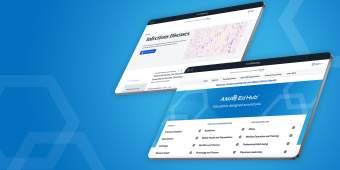In this post, we hear from Antonio García, TXI’s Head of Design, about how design thinking drives the work TXI does and what an organization can expect when they partner with TXI.
Q: Design thinking isn’t a new concept, but its application to software development is relatively rare. What’s going on there?
Not only isn’t design thinking a new concept, it’s one that’s received a lot of attention, to the point of being trendy, almost. There’s been a lot written about its application in consumer packaged goods, consumer electronics, physical products and service models, things like that.
But there isn’t as much discussion of design thinking applied to software and custom software. There are probably many reasons why, but one is likely that the dominant paradigm in software development in the last few decades has been agile, and agile systems aim to produce working code. Agile is very output-focused.
Design thinking is oriented more toward outcomes. So there’s a tension between the two. The thinking is that, if you’re trying to get production code out the door, you don’t have time to conduct user research. You’re pretty sure you know what you need; you just have to build it.
But that mindset gets a lot of organizations into trouble.
Q: What do you mean by “trouble”?
Something like five percent of product innovations succeed. Five percent! That’s terrible. That means 19 out of 20 product innovations fail.
So all the time spent on the development is wasted because the end product didn’t meet the users’ needs or didn’t account for some circumstance. Organizations can be really efficient at producing software, but if their end-users don’t use it, that production is a waste. Building the wrong thing is the most expensive thing you can do.
Q: And design thinking can help?
Design thinking is about finding an intersection between what people desire, what’s technically feasible and what’s commercially viable for the organization. Arguably, the most important thing to figure out is if people actually want or need the thing—it doesn’t matter if you have some proprietary technology or a brilliant business model you think will sustain the innovation. If nobody wants it, neither of those “advantages” matter.
So it's really important to orient yourself to the needs of people, to be human-centered in your approach. When we apply those concepts at TXI, we’re being human-centered in the making of software. And that means we start projects by trying to understand the people who will be using the software we intend to build.
In fact, sometimes our user research leads us to conclude that we don’t actually need to build any software. Sometimes, it shows us that we need to build something really different from what we expected going in—or what our clients expected when they partnered with us.
That’s the whole point of applying design thinking to custom software development. It’s about de-risking the process so we end up with something that actually improves people’s lives or work.
Q: This makes a lot of sense. Why isn’t everyone doing this?
I think a big reason is a lot of organizations are focused on finding the shortest, most cost-effective, most efficient path to THE solution, and most business leaders assume they know what that solution is. And that’s understandable. They’re recruited and compensated for their experience. They’re incented to know all the things.
But there is never just one solution. That’s what you come to understand when you start to operate with a design thinking mindset.





